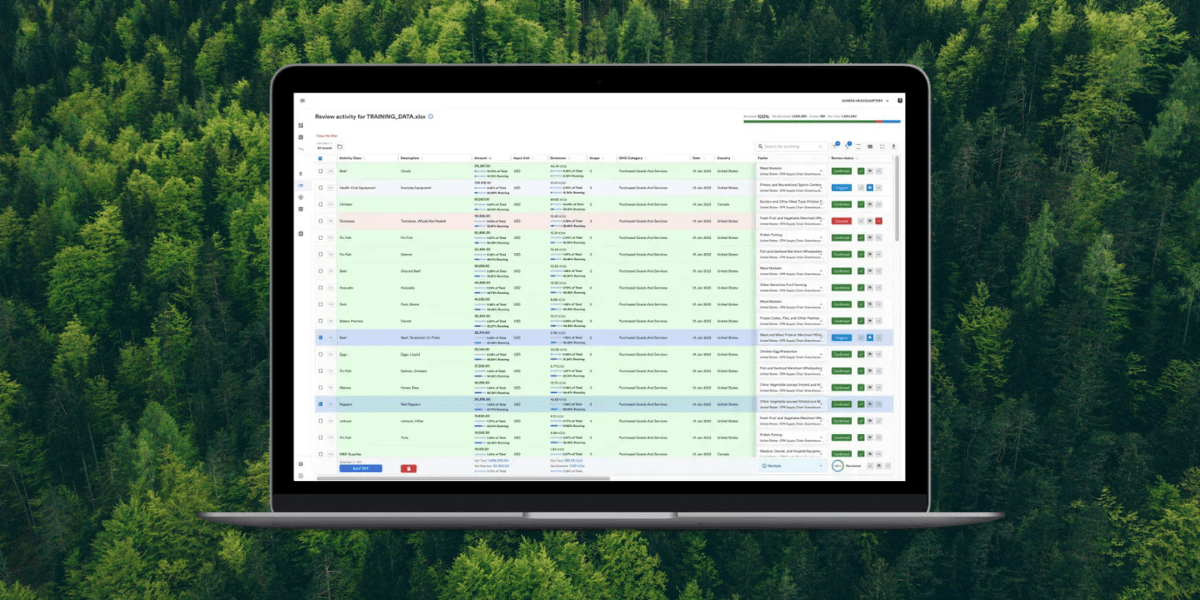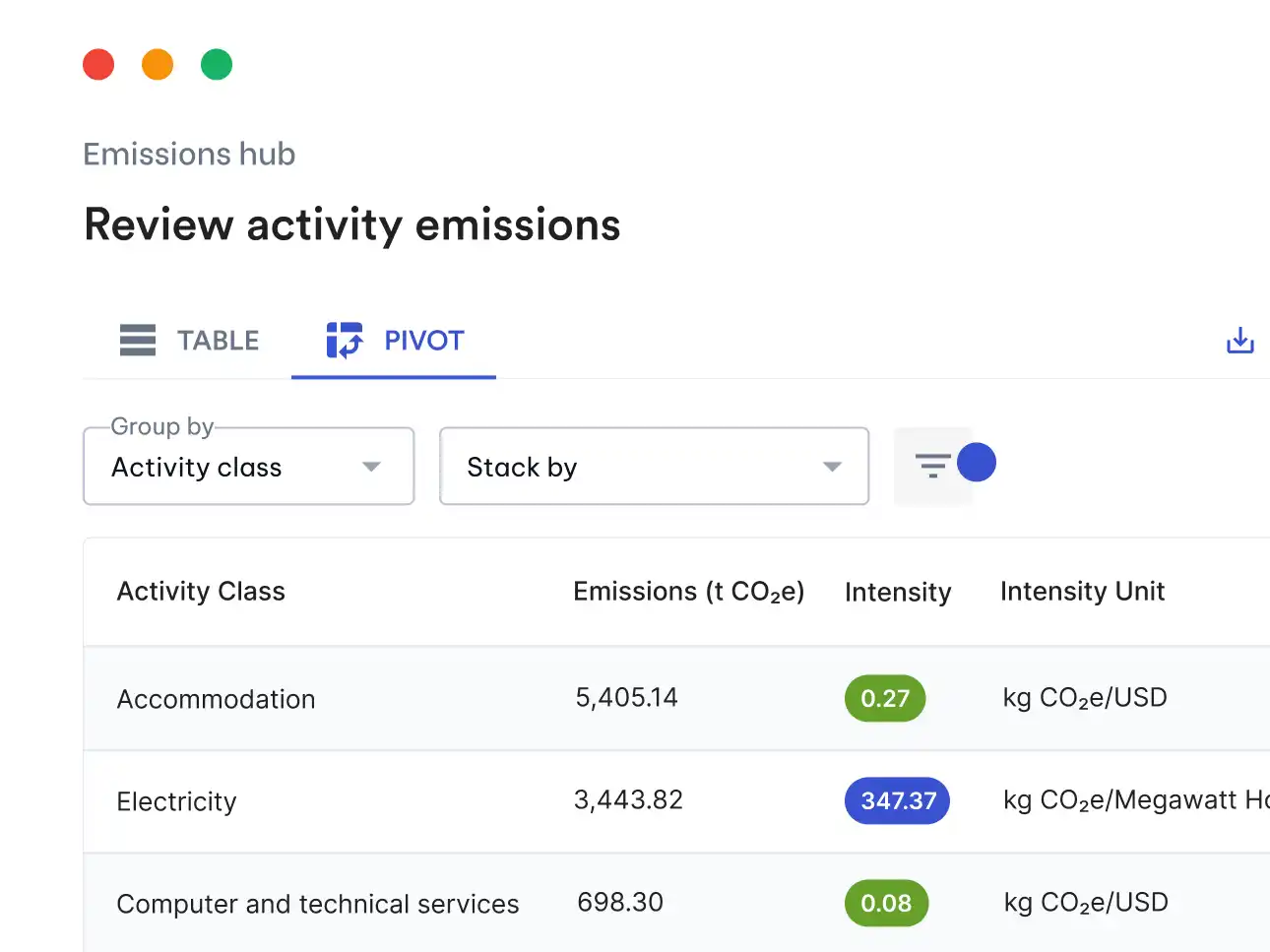As regulatory pressure ramps up, especially from Australia’s Climate-related Financial Disclosure (CRFD) requirements and the evolving ASRS (Australian Sustainability Reporting Standards), companies are scrambling to get their sustainability data in shape. But even among well-intentioned businesses, most are still struggling with some basic blind spots in their emissions data.
At Avarni, we see the same five issues crop up across industries and company sizes. Getting ahead of these now is the difference between staying compliant and scrambling to justify gaps when reporting season hits.
Here’s where most companies fall short, and how to close the gaps before they become roadblocks.
Missing Scope 3 supplier data
This is the biggest blind spot, and it’s not even close. Scope 3 emissions, especially from purchased goods and services (Category 1), make up the lion’s share of most companies’ footprints. Yet most procurement teams aren’t set up to request or manage this data.
What’s usually missing is actual supplier-level emissions data. Many companies rely on spend-based estimates, which won’t cut it under ASRS, particularly for large reporters. Worse, most don’t segment suppliers by emissions relevance, risk, or data availability, making prioritisation impossible.
The fix? Start supplier engagement early and segment your supply chain. Tier suppliers based on spend and emissions impact, then use a platform like Avarni to send data requests and track responses. Where data isn’t available, apply hybrid models using product-level emissions factors. Download our free Scope 3 supplier emissions questionnaire toolkit, which includes a ready-made question set to help you request consistent, audit-ready data from suppliers. If you're also building internal workflows for Scope 1, 2, and 3, these AASB S2 data collection templates will help you set up a scalable structure.
Incomplete or misclassified emissions categories
Another common issue is poor categorisation of emissions, especially across Scope 3. Companies often misclassify business travel, commuting, waste, or upstream transportation under general buckets, or lump them into “Other” to simplify.
That might work for internal tracking, but it doesn’t fly with ASRS-aligned disclosures. The standards, based on the ISSB and GHG Protocol, require clarity, consistency, and correct classification across all 15 Scope 3 categories.
To close this gap, revisit your emissions mapping. Are you tracking employee commuting under Scope 3, Category 7? Are cloud computing and data centres being categorised under purchased goods and services, or energy use? Small misclassifications snowball under scrutiny. Use GHG Protocol guidance to realign each activity with the right category, and document your methodology for transparency. Our free Scope classification guide helps you categorise emissions correctly and flag common errors.
Lack of methodology documentation
Most companies do the work to estimate emissions, but fail to capture how they did it. This includes emission factors used, data sources, calculation assumptions, boundaries, and exclusions. Without that, assurance is nearly impossible and disclosures risk being rejected.
ASRS requires not just the “what”, but the “how”. If an auditor can’t follow your methodology end to end, they won’t sign off.
The fix is simple but time-consuming. Version your emissions models. Keep a central inventory of factors and sources. Annotate assumptions, especially where data is estimated. Download our GHG emission sources reference guide to make sure you’re capturing all relevant sources, a critical first step in building a fully documented methodology.
Poor integration between finance and sustainability teams
Another huge blocker is the disconnect between financial reporting and sustainability teams. Under ASRS, climate-related metrics, especially emissions, need to be linked to financial materiality. But if your finance team isn't involved in data collection, boundary setting, or assumptions, you’ll struggle to align disclosures.
We often see emissions reported using operational control, while financial disclosures follow equity share. That’s a red flag.
To fix this, align early. Loop finance in during scoping, not just for sign-off. Train finance staff on the basics of GHG Protocol. Build climate data into broader risk and financial planning processes. This cross-functional integration isn’t just good practice, it’s essential for ASRS readiness.
No process for updating or revising data
Many companies treat emissions reporting as an annual, backward-looking task. That won’t work under ASRS, where continuous improvement and disclosure updates are expected. Emissions estimates will change as better data becomes available, but without a process for updates, version control, and restatements, companies can’t show progress or transparency.
This is especially risky when emissions factors are revised, methodologies are refined, or supplier data comes in after the reporting deadline. If there’s no process to revisit estimates, disclosures quickly fall out of date.
The solution is to build emissions tracking into an ongoing workflow. Use tools that support versioning, audit trails, and rolling updates. Assign internal owners for each emissions category, and schedule regular data reviews — quarterly is a good starting point. Over time, maintaining high-quality, up-to-date data becomes just as important as the initial footprint.





